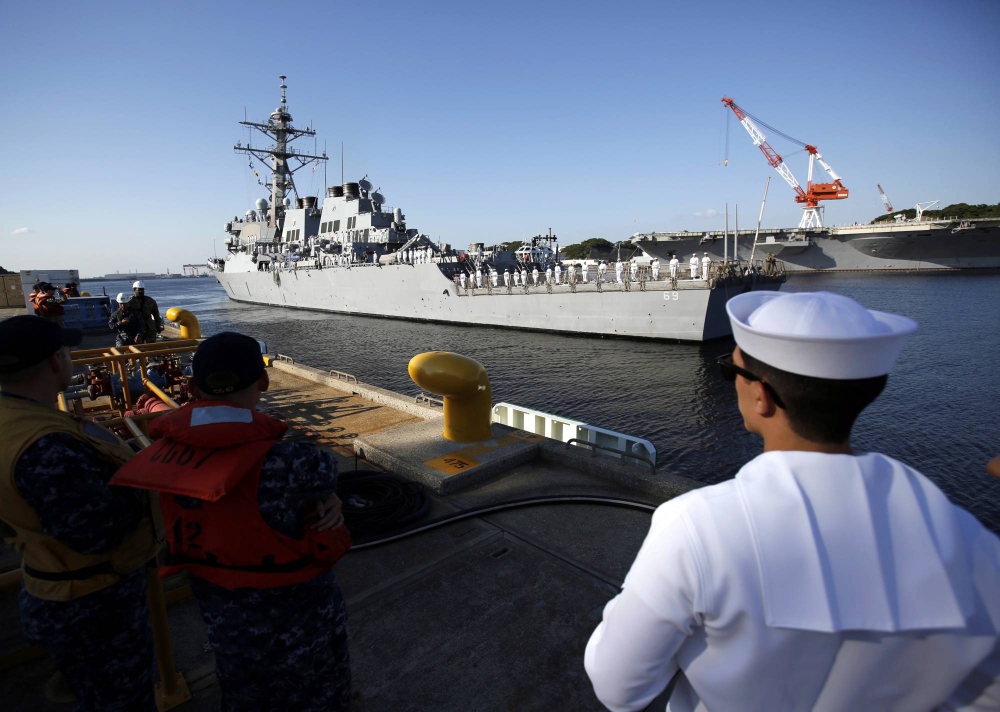A former military power plant on Taiwan’s tiny Matsu archipelago is bathed in an ominous crimson light – an art installation reminding visitors of the ever-present threat of a Chinese invasion.
The exhibit, titled “Your Country Needs You: Glory of Jun Hun” – which means “military spirit” – is part of the Matsu Biennial, which runs until mid-November.
Some of the works displayed across Matsu – a chain of rocky islands 20 minutes by boat from the east coast of China’s Fujian province – focus on its natural beauty.
But artists such as light designer Liu Ping-yi and his partner, Annie Chu, chose to capitalise on the outlying islands’ conflict-riven history.
“We wanted to use light to let the visitors return to a period in the past and understand how the soldiers and civilians lived on the island then,” says Liu, who collaborated with a sound artist on the power plant installation. “I hope they can imagine what Matsu was like during wartime.”
The Matsu islands were military strongholds for Nationalist forces after they fled mainland China for Taiwan in 1949 following their defeat in the Chinese civil war.
The former Gun Hun military power plant in the Matsu chain houses the art installation “After the Kerosene Lamps: Roaring and Air-raid Shelters” by Yujung Wang, part of the Matsu Biennial. Photo: AFP
Detail from “After the Kerosene Lamps: Roaring and Air-raid Shelters” at the former Gun Hun power plant. Photo: AFP
Sporadically shelled by Communist China, the Nationalists strengthened Matsu’s fortifications, building underground tunnels and air-raid shelters. Coastal outposts were given narrow openings so that soldiers could fire in the direction of the mainland.
The intermittent bombardments continued until 1979, stopping only after the United States – which then had diplomatic ties with Taipei and was providing aid to Nationalist troops – switched to formally recognising the administration of the People’s Republic of China in Beijing as the sole legitimate government of China.
Many of Matsu’s military structures have been abandoned, although some of the tunnels have been restored and are open to the public.
Chao Kai-chih, an artist who helped curate the biennial’s installations
For the biennial, an air-raid shelter now carries soundtracks of the past, while a former military performance hall showcases Chinese characters taken from letters sent to servicemen and residents on the islands that have been cut out and strung together.
A whale-shaped wire structure has been erected on a beach, fashioned out of parts of old Matsu ships with navy vessel accents.
Magistrate Wang Chung-ming hopes that the biennial will bring the islands some much needed tourism dollars, as three years of border restrictions because of the Covid-19 pandemic have meant a loss in visitors and income.
“Receiving Happiness” by Chen Zhi-Xu and Raito Low, on display at Shanlong Performance Hall as part of the Matsu Biennial. Photo: AFP
“The Sea is My Land” by Iyo Kacaw is part of the Matsu Biennial. Photo: AFP
Now “Matsu is a tourism-oriented county”, says Wang, who takes issue with his home being labelled a “frontline island”.
“Matsu needs to move towards the concept of an island museum,” he says.
The outlying islands are just northwest of the Taiwan Strait, a 180km (110-mile) wide waterway and key shipping route that separates mainland China from Taiwan’s main island.
“The Green Lights” by Liu Chih-hung on display at Stronghold 26 as part of the Matsu Biennial. Photo: AFP
Beijing – which claims Taiwan as its territory – has held massive military exercises around it in the past year, including one in April that saw warplanes and naval vessels simulate encirclement of the island of Taiwan.
Artist Chao Kai-chih, who helped curate the biennial’s installations, says Matsu residents are “not scared of verbal threats by China”.
“Come if you have the guts,” he jokes – before quickly switching course and quipping that if China were to invade, “you can attack a bit further – attack Taiwan, don’t attack Matsu”.
Visitors to the Matsu Biennial admiring “Plant Microcosmos Project” by Jeanne Lee. Photo: AFP
Growing up in Matsu under the military administration had many restrictions, says Chao, 66, describing a 9pm curfew and not being allowed onto the islands’ beaches.
“We want peace, we don’t want war and what we can do is to turn Matsu into an art island,” Chao says.
“Now we have to slowly restart the negotiation process from the perspective of tourism and cargo goods,” Wang says.
“Politically, we must follow Taiwan, but economically Matsu must integrate with the mainland.”



